The Complete Miyajima Guide
Etiquette & Spots to 120% Enjoy the Beauty and
Culture of the Island of Gods
Table of Contents
Welcome to Miyajima, the Island Where Gods Dwell! Tips for a Memorable Trip
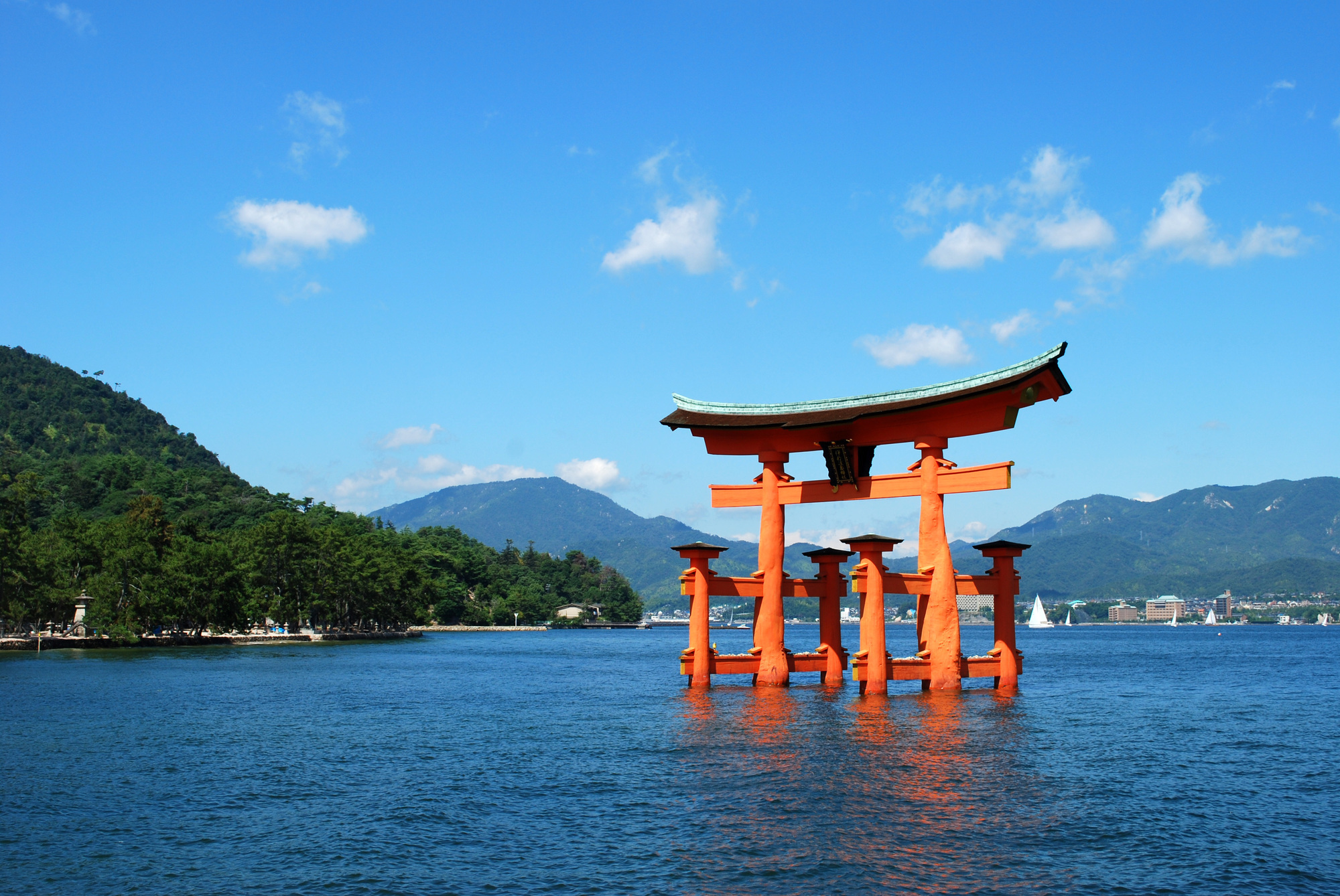
Just a 10-minute ferry ride from the coast of Hiroshima lies Miyajima (official name: Itsukushima), a sacred island that has been worshipped as a god itself since ancient times. The great vermilion torii gate floating on the sea, the majestic shrine pavilions, and the adorable wild deer invite visitors into a mystical world.
This guide does more than just show you Miyajima's beautiful scenery and famous spots. It is here to help you elevate a simple tour into a deeply spiritual and memorable experience by understanding and respecting the island's sacred culture, history, and rules.
In particular, knowing how to properly interact with the deer, a symbol of Miyajima, is extremely important for protecting yourself, the deer, and the island's environment. Now, let's begin a special journey to Miyajima to enjoy a quiet dialogue with the gods.
1.The Story and Latest News of Miyajima, Woven from History and Faith
Behind the scenery of Miyajima lies a deep history and faith spanning over 1,400 years. Knowing this story will make your journey even more meaningful.
1-1. From a Heian Dream to a World Heritage Site: The History of Miyajima
The history of Miyajima begins with the founding of Itsukushima Shrine in the year 593, during the reign of Empress Suiko. However, it was the powerful leader of the late Heian period, Taira no Kiyomori (1118-1181), who made its name famous throughout the land. Kiyomori deeply worshipped the deities of Itsukushima Shrine and, praying for the prosperity of his clan, constructed the magnificent shrine pavilions in the shinden-zukuri style, floating on the sea. This original and beautiful landscape is the origin of Miyajima as we know it.
In the Edo period, "Itsukushima-mode" (pilgrimage to Itsukushima) became popular among the common people, and many visited the island. Then, in 1996, the area including Itsukushima Shrine and the primeval forest of Mt. Misen behind it was registered as a UNESCO World Cultural Heritage site, its value recognized worldwide.
1-2. Forms of Prayer and Artisan Skill: The Culture Rooted in Miyajima
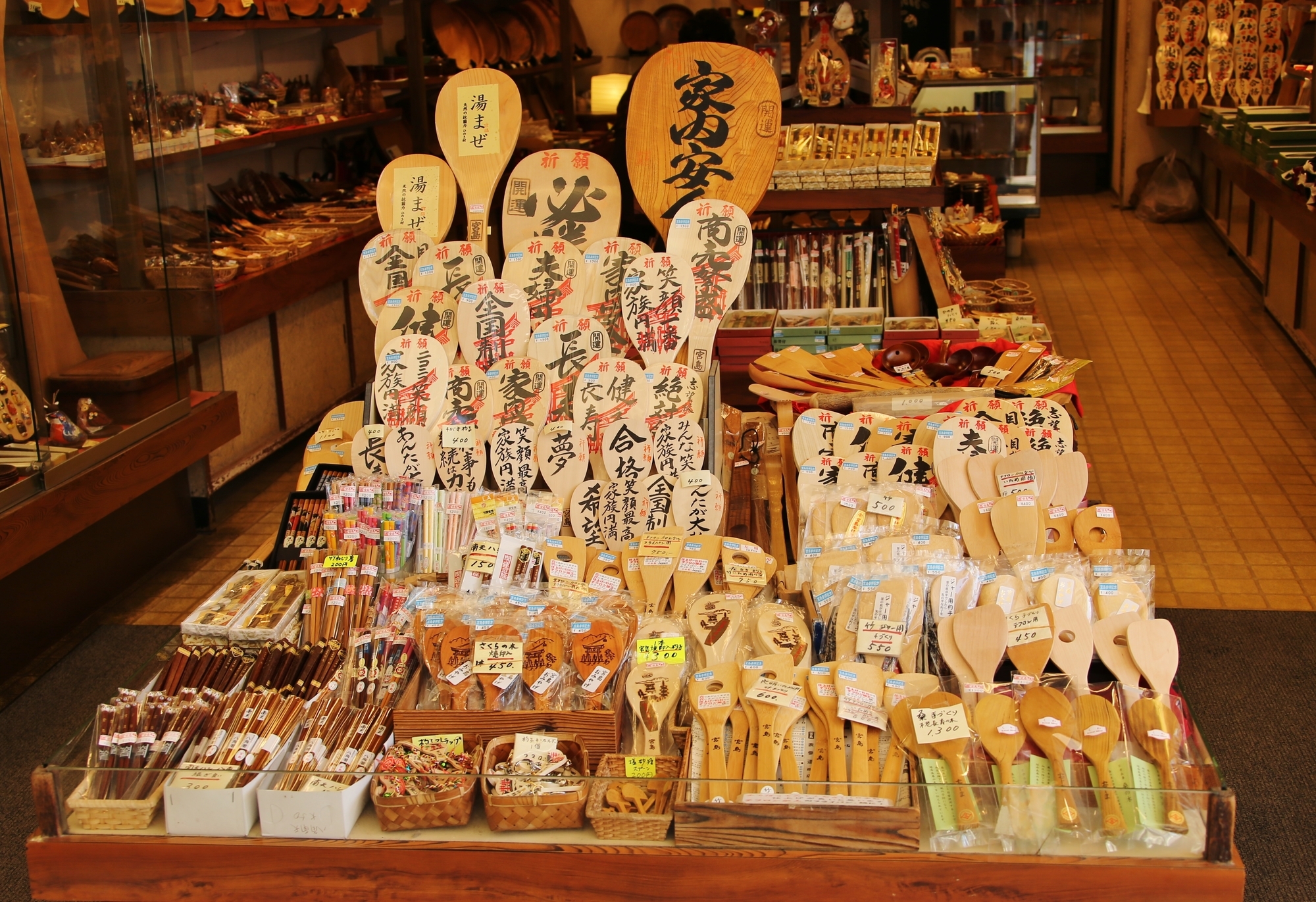
- Miyajima-bori (Miyajima Carving): A traditional craft said to have started when artisans used leftover wood from the construction of Itsukushima Shrine to make wooden goods as souvenirs for visitors. The Miyajima Shakushi (rice scoop) is particularly famous as a good luck charm, based on a pun that associates "meshi-toru" (to scoop rice) with "teki o meshi-toru" (to capture the enemy).
- Kangen-sai Festival: Held annually on the 17th day of the 6th lunar month, it is one of Japan's three major boat festivals. It is an elegant and solemn festival where the gods are entertained with gagaku (ancient court music), performed on boats, a custom that originated from the pastimes of Heian aristocrats.
1-3. [2025 Update] The Restored Beauty of the Great Torii Gate and the Island Today
After about three and a half years of large-scale preservation and repair work that began in 2019, the iconic Great Torii Gate of Itsukushima Shrine regained its vibrant vermilion color at the end of 2022. All scaffolding has now been removed, and its original beautiful form is once again reflected on the sea. This is a perfect opportunity to enjoy its two expressions: the mystical sight of it floating on the sea at high tide, and the chance to walk right up to its massive base at low tide. A tourist information center utilizing the latest digital technology has also been established, making it easier to explore the island's charms comfortably.
2.Preparations & Basic Info: The First Step to a Smooth Journey
2-1. Access from Hiroshima City (How to Ride the Ferry)
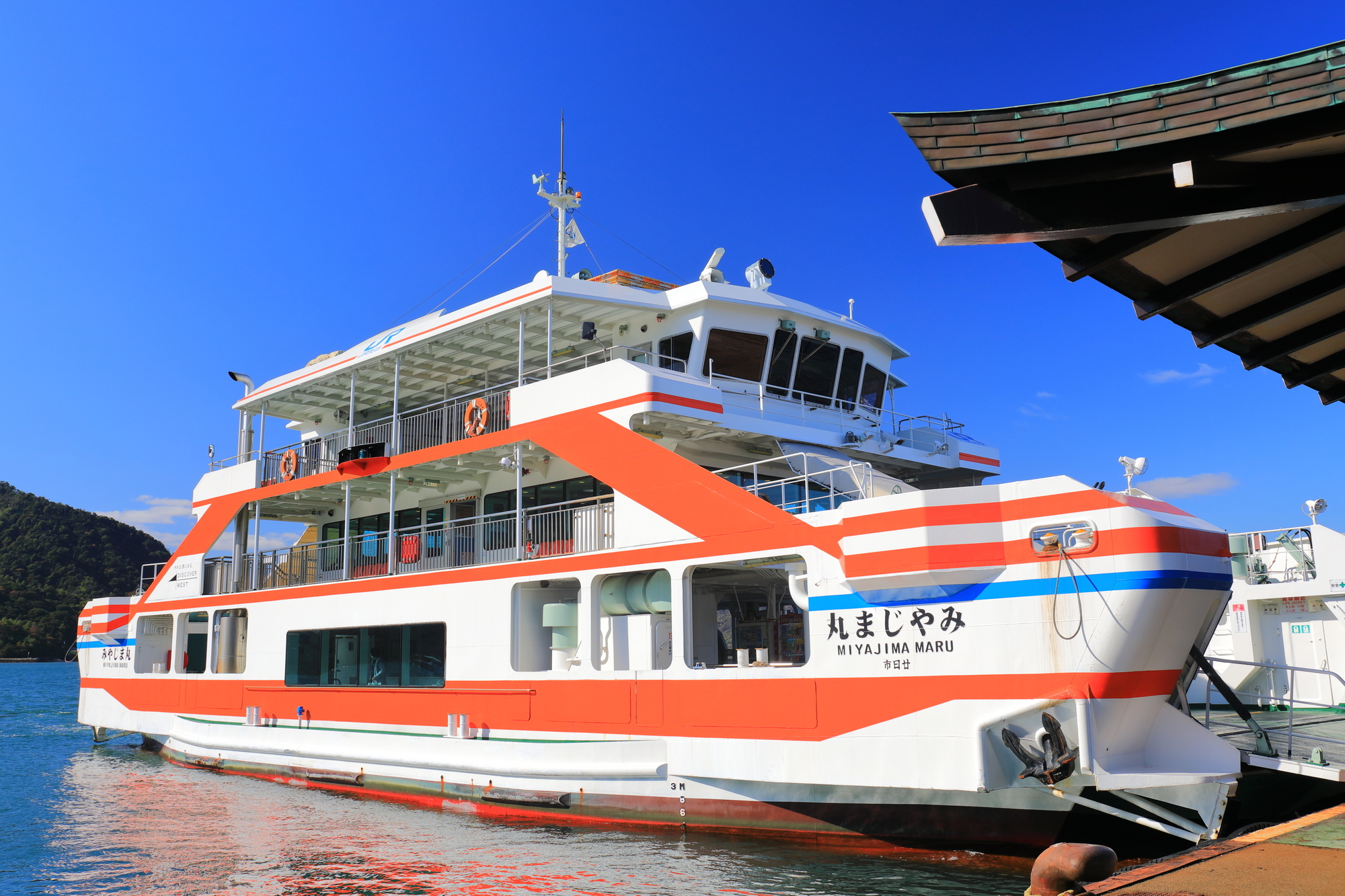
The only way to get to Miyajima is by ferry.
- Route: From JR Hiroshima Station, take the Sanyo Main Line to Miyajimaguchi Station (approx. 30 minutes). The ferry terminal is about a 5-minute walk from Miyajimaguchi Station.
- Ferry Companies: Two companies, JR West Miyajima Ferry and Miyajima Matsudai Kisen, operate services every 10-15 minutes. The ride takes about 10 minutes.
- JR Ferry Perk: If you have a Japan Rail Pass, you can ride the JR ferry at no extra charge. Additionally, some JR ferry services take a route that passes closest to the Great Torii Gate, which is recommended for those who want to enjoy the spectacular view from the sea.
2-2. Getting Around the Island: Primarily on Foot and by Ropeway
Miyajima's main tourist spots (Itsukushima Shrine, Omotesando Shopping Arcade, Daisho-in Temple, etc.) are clustered within walking distance from the ferry terminal. As the roads on the island are narrow, exploring on foot is the basic method. To ascend Mt. Misen, it is convenient to use the Miyajima Ropeway to get to the midway point.
2-3. Essential Travel Knowledge: How to Check the Tides
The tourist experience in Miyajima is greatly influenced by the tides.
- High Tide: The most fantastical time, when the Great Torii Gate and the shrine pavilions appear to be floating on the sea.
- Low Tide: You can walk right up to the base of the Great Torii Gate. It's a precious opportunity to experience its massive scale up close.
- How to Check: The Miyajima Tourist Association website publishes a daily tide table. Check the times and tide levels for "High Tide" and "Low Tide" in advance to plan your visit. It is possible to see both views in one day.
3.[By Area] Popular Spots and the Etiquette You Should Know
3-1. Itsukushima Shrine Area: Conduct in the Sacred Precincts and Photography Manners
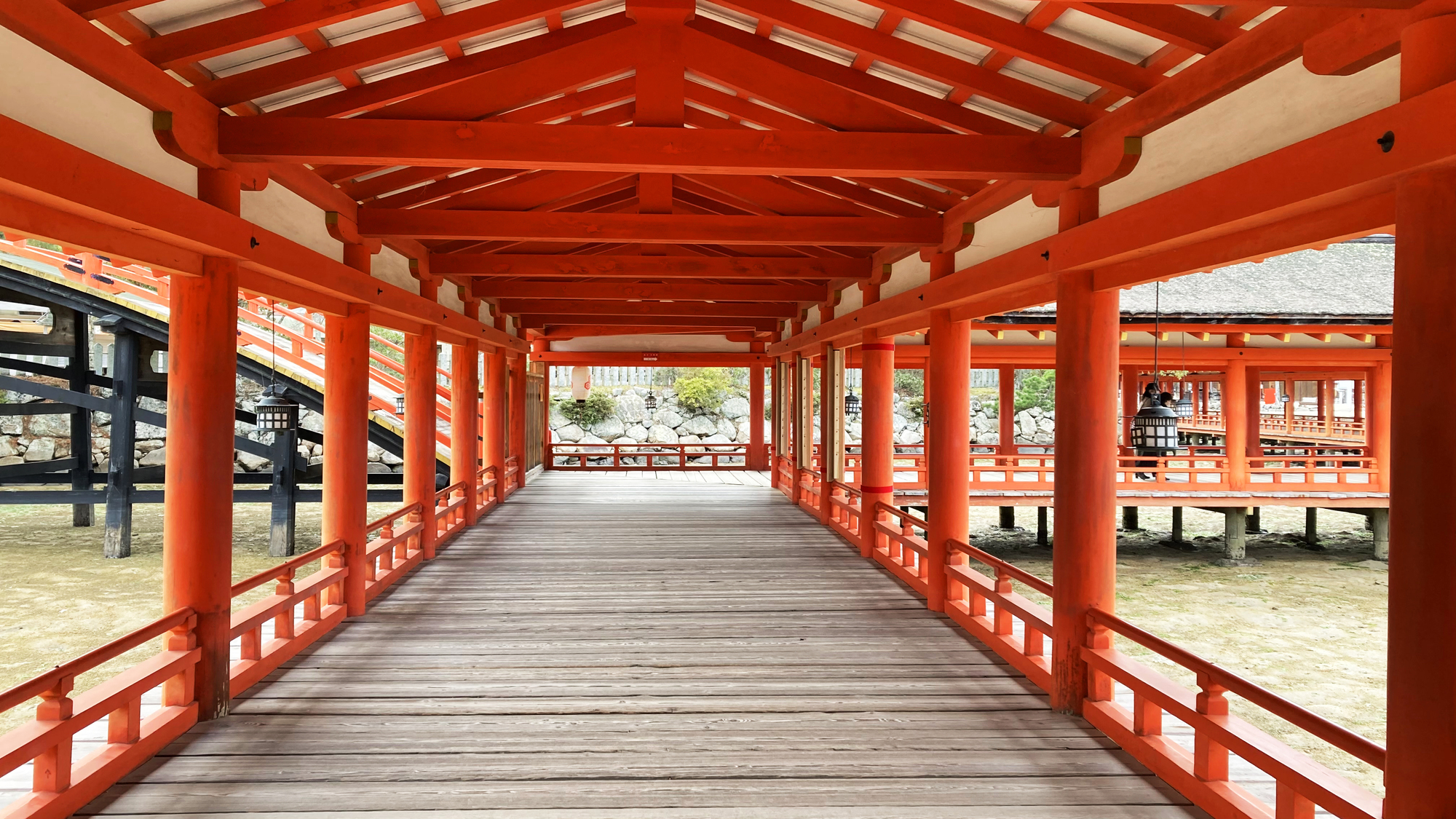
Etiquette to Know: Itsukushima Shrine is an active place of worship and a sacred "shin'iki" (divine precinct). Making loud noises or running around is strictly forbidden. When walking through the corridors, enjoy the scenery quietly. Using a tripod for serious photography can be a nuisance to other worshippers, so be especially considerate during crowded times. It is good manners to refrain from taking photos when prayers or other Shinto rituals are being performed.
3-2. Daisho-in Temple & Momijidani Park Area: Enjoying the Serene Temple and Nature
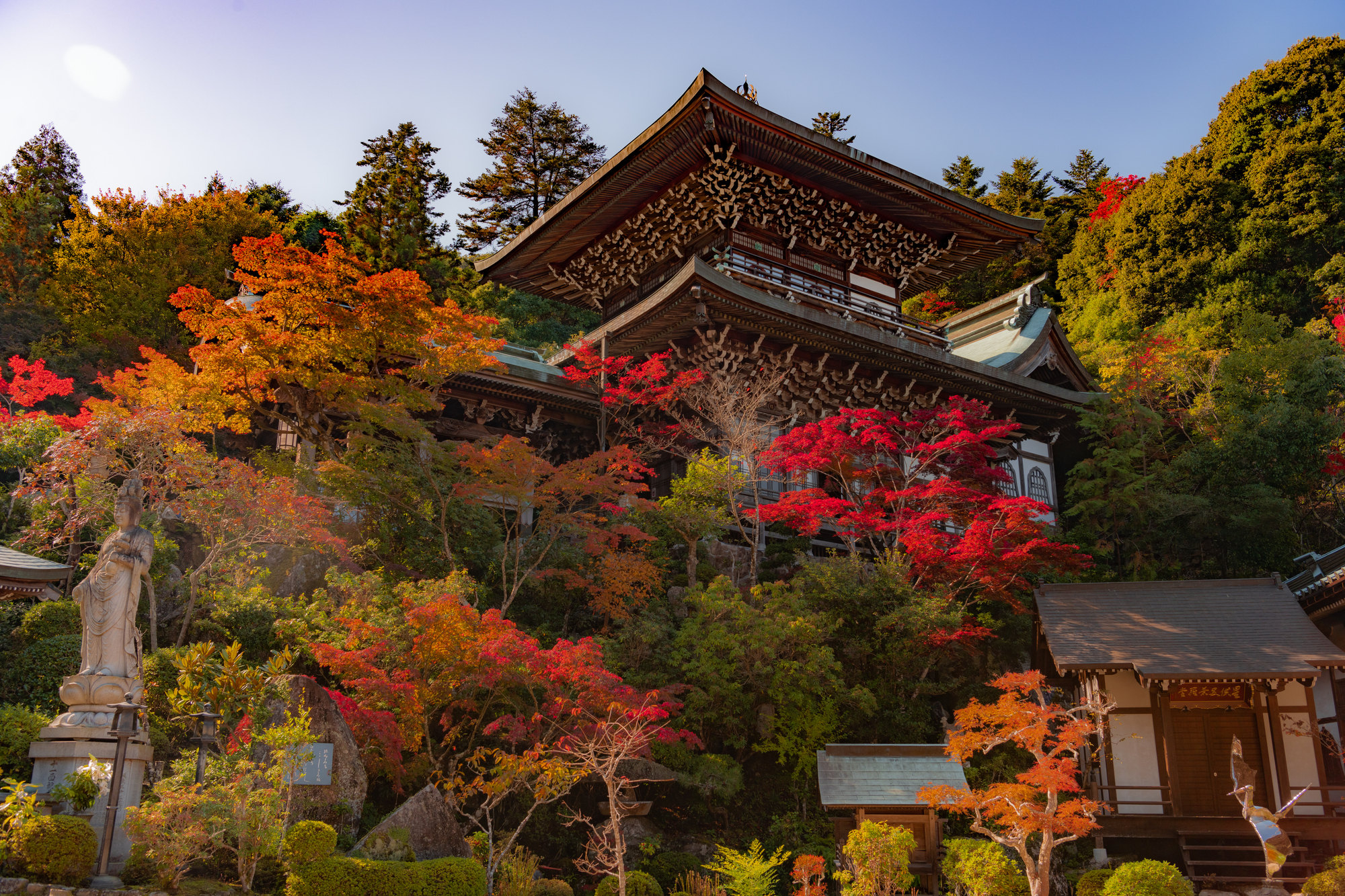
Etiquette to Know: Daisho-in is the oldest Buddhist temple on Miyajima. The "mani-guruma" (prayer wheels) on its grounds are a tool from Tibetan Buddhism; it is said that one turn is equivalent in merit to reading a sutra once. Please turn them gently and quietly. The "Henjokutsu Cave" is a sacred place where the principal images of the Shikoku 88 Temple Pilgrimage are enshrined, said to grant the same benefits as completing the pilgrimage. Please walk through it in silence.
3-3. Mt. Misen Area: Hiking Manners on the Sacred Mountain
Etiquette to Know: Mt. Misen has been an object of worship since ancient times and is a national park with pristine nature. Follow the basic rules: stay on the hiking trails, do not pick any plants, and be sure to carry out all your trash. It is a part of Japanese hiking culture to greet fellow hikers with a "Konnichiwa."
3-4. Omotesando Shopping Arcade Area: Street Food and Coexistence with Deer
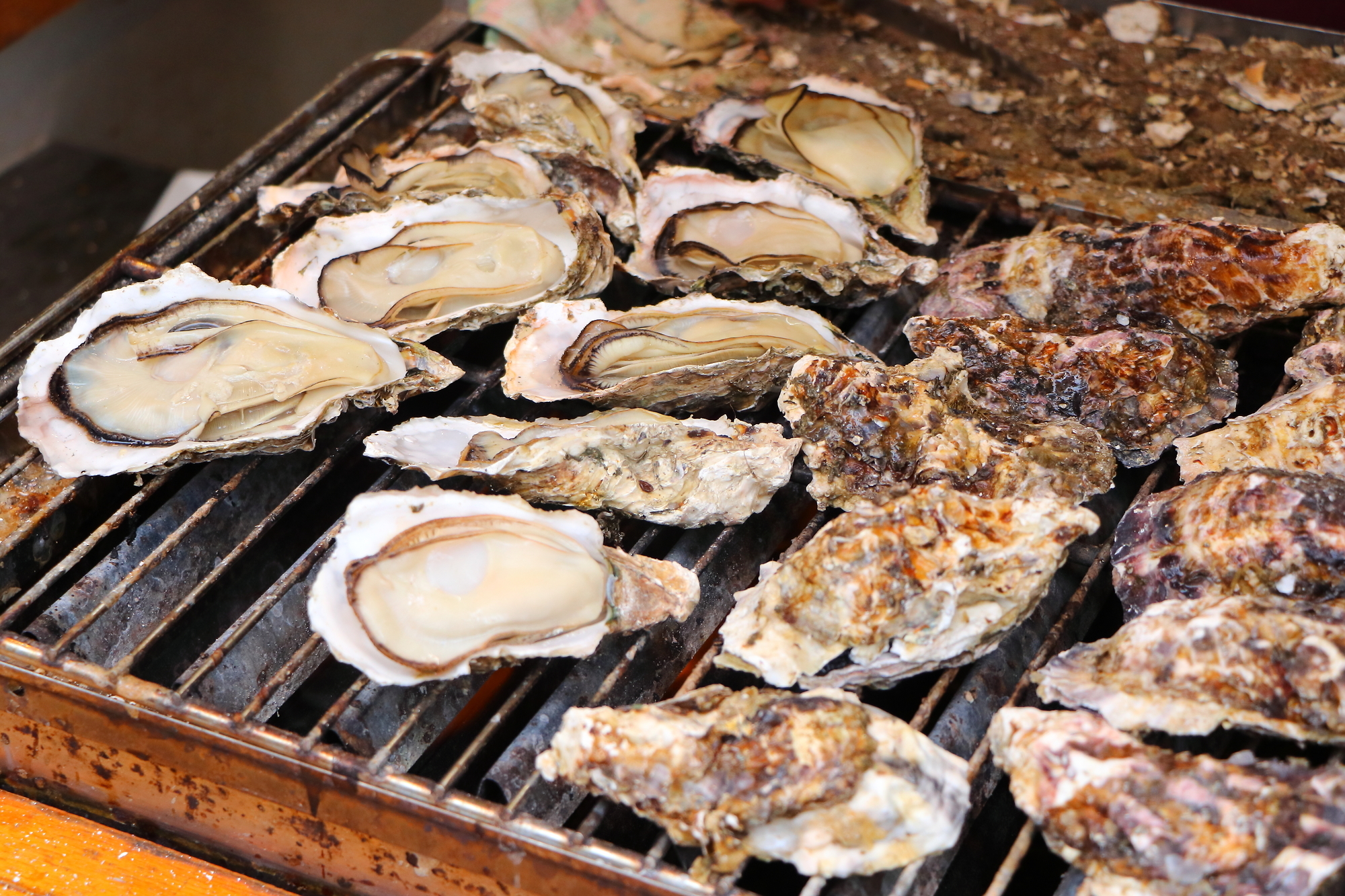
Etiquette to Know: [By Theme] Essential Manners for Enjoying Miyajima to the Fullest
4.The Essentials: A Themed Guide to Manners for Enjoying Miyajima
4-1. Wild Deer Edition: "Feeding is Strictly Prohibited" — The Correct Way to Interact with the Messengers of the Gods
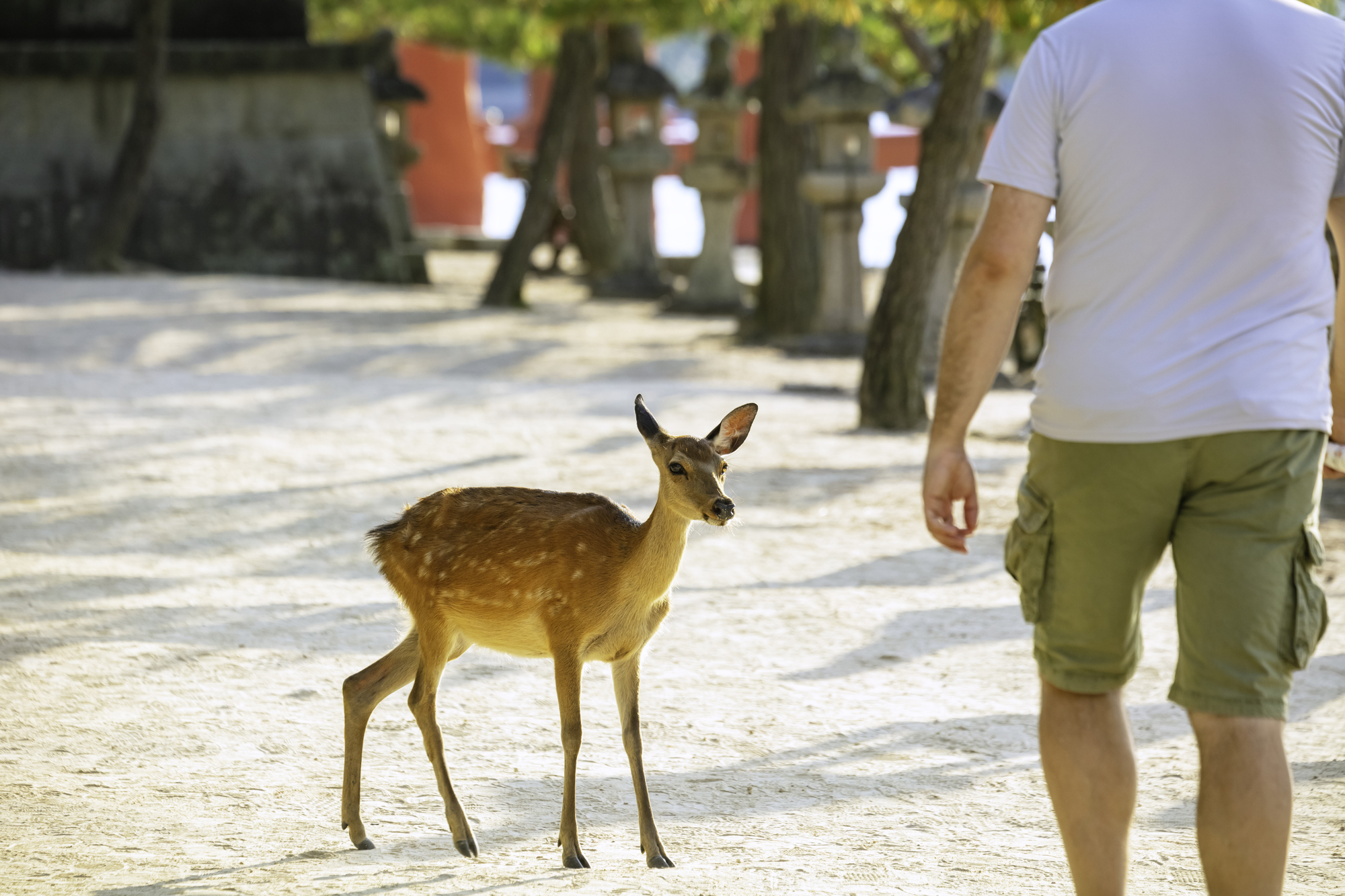
The deer of Miyajima are considered "messengers of the gods," but they are wild animals. Unlike the deer in Nara, tourists are strictly forbidden from feeding the deer in Miyajima.
- Why is it prohibited?: When deer get a taste for human food, they stop eating natural grass, which can disrupt the ecosystem. It also leads to problems such as deer chasing people for food or damaging goods in shops.
- The Correct Way to Interact:
1.Absolutely do not feed them.
2.Do not eat while walking. Keep food securely in your bag.
3.Be careful with paper items (maps, tickets, etc.) as they might eat them.
4.Watch them gently. Do not touch or chase them without reason. Be especially careful when fawns are present, as the mother deer are very protective.
4-2. Shrines & Temples Edition: Proper Worship Etiquette in Sacred Places
- Bow before the Torii: Before passing through a torii gate, the entrance to a shrine, give a slight bow.
- Purification at the Chozuya: Hold the ladle with your right hand and purify your left hand. Then, hold it with your left hand to purify your right. Hold the ladle with your right hand again, pour water into your left palm to rinse your mouth. Finally, hold the ladle vertically to rinse the handle.
- Two Bows, Two Claps, One Bow: At the main shrine, the basic custom is to bow deeply twice, clap your hands twice, and then bow deeply once more.
4-3. Dining Edition: The Smart Way to Enjoy Local Delicacies
4-4. Nature & Environment Edition: Preserving the World Heritage Island for the Future
The entire island of Miyajima is a precious cultural and natural heritage. To protect its beautiful scenery and environment, absolutely do not litter. Smoking is permitted only in designated areas.
5.Planning Your Trip: Model Itineraries to Practice Good Manners
5-1. [Day Trip] A Concentrated Tour of Miyajima's Charms! The Classic Course
5-2. [1 Night, 2 Days] Experiencing the Serene Night and Mystical Morning: The Full Experience Course
- Day 1: Arrive in Miyajima in the afternoon → Leave luggage at your ryokan → Stroll the Omotesando Shopping Arcade → See the Great Torii at low tide → Check into your ryokan → After dinner, take a walk to see the fantastically illuminated Itsukushima Shrine and Great Torii (the deer are calm at night, but be quiet).
- Day 2: In the early morning, visit the uncrowded Itsukushima Shrine (best at high tide) → After breakfast, take the Miyajima Ropeway to Mt. Misen → Visit the Misen Hondo and the "Kiezu-no-Reika" (eternal fire), and enjoy the superb view from the summit → After descending, stroll through Momijidani Park → After lunch, head back while looking for souvenirs.
For a Sacred and Memorable Journey
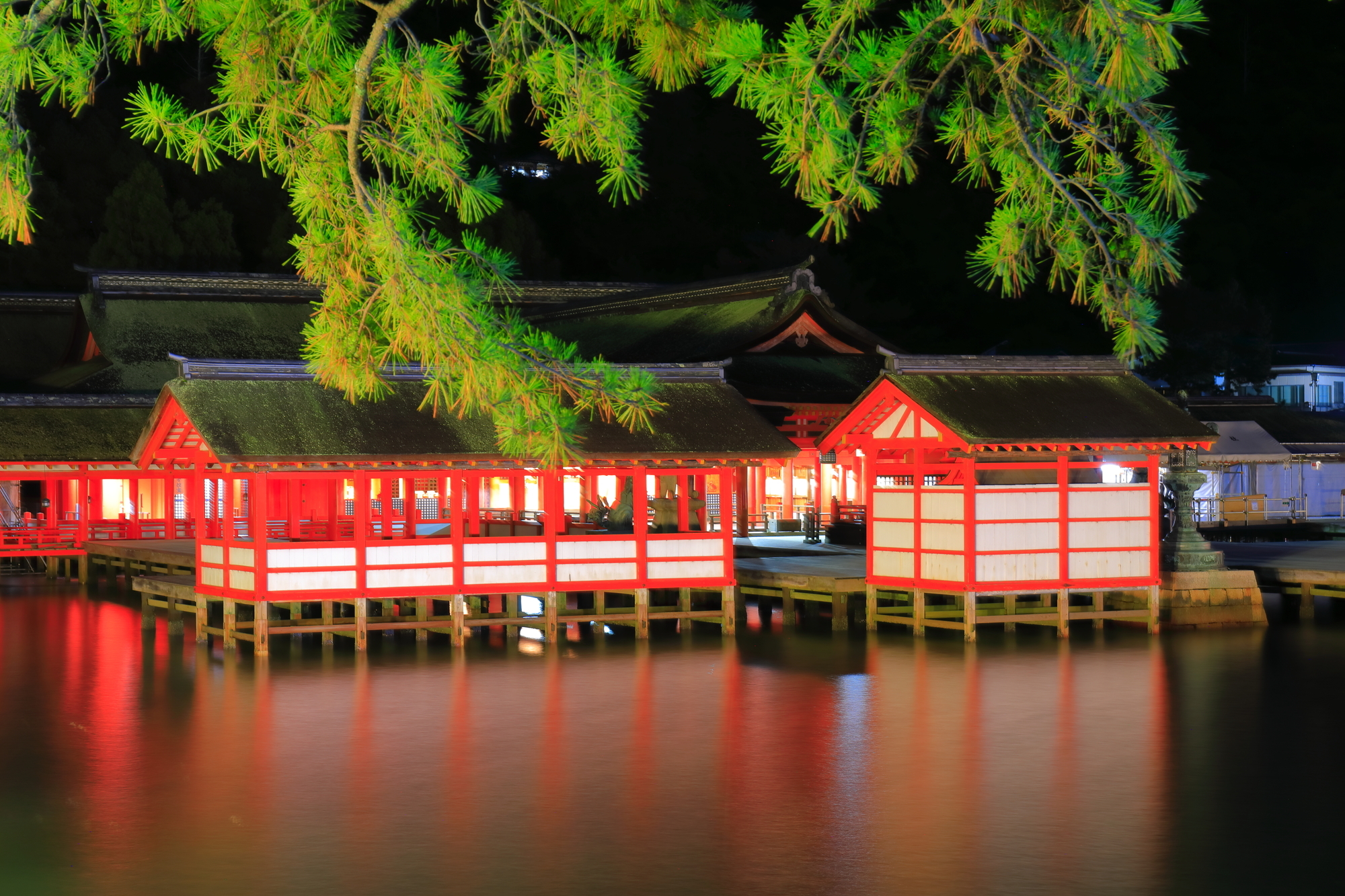
Miyajima is not just a beautiful tourist destination. It is a space of prayer where gods, nature, and people have coexisted for many long years. The manners and rules introduced in this guide are the small contributions we travelers can make to connect that sacred balance to the future.
Gently watching over the deer, paying respect to the sacred precincts, and listening to the silence of the island. By doing so, your journey will surely be filled with unforgettable deep emotion and tranquility.

